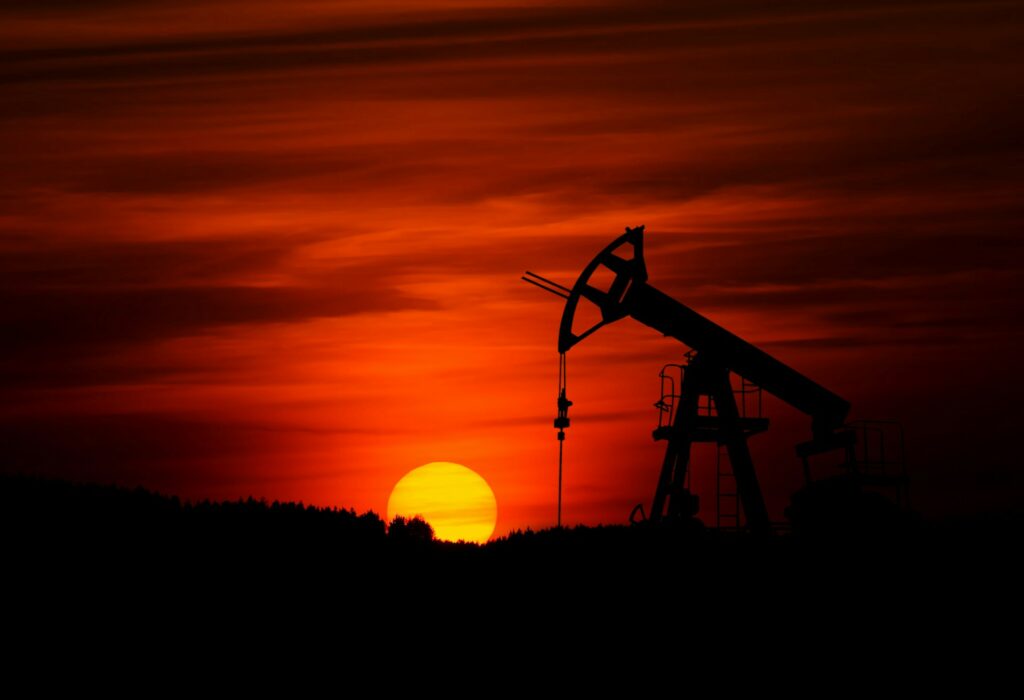How AI Is Redefining the Oil and Gas Industry from the Ground Up

How AI Is Redefining the Oil and Gas Industry from the Ground Up
The innovation of the oil and gas business has always been a source of success. The desire to dig deeper, work quicker, and extract more while reducing expense and danger has traditionally been the driving force behind advances in a variety of fields, including seismic imaging, offshore drilling, and large-scale refinery systems. However, by the year 2025, the next significant advancement in energy cannot be found in a new piece of equipment or tool; rather, it is found in artificial intelligence (AI). Artificial intelligence (AI) has evolved as the backbone of contemporary energy strategy as a result of rising need to optimize operations, decrease carbon footprints, manage unpredictable markets, and protect worker safety. The use of artificial intelligence is no longer considered experimental; rather, it is becoming fundamental, since it enables predictive insights, decision-making in real time, autonomous operations, and dynamic optimization across the whole value chain. Not only is artificial intelligence (AI) enhancing the way the oil and gas sector operates, but it is also redefining what is feasible. This trend can be seen from the beginning stages of exploration to the last mile of distribution and emissions reporting.
1. Seismic analysis powered by artificial intelligence for more intelligent subsurface exploration
During the oil and gas industry, exploration is one of the phases that is both the most costly and the most unpredictable. On the other hand, artificial intelligence systems are already being used to analyze seismic and geological data at rates and degrees of precision that were previously unattainable. In order to identify patterns that may indicate the existence of oil or gas reserves, machine learning algorithms sift through millions of layers of subsurface imaging. These models are able to pinpoint these patterns with more precision than previous approaches. It is less likely that dry wells will be drilled thanks to these sophisticated technology, which saves not just time but also millions of dollars in investment that would have been lost.
2. Drilling automation that is driven by artificial intelligence improves efficiency while also reducing risks
Artificial intelligence has improved the management of drilling operations. Continuous monitoring of downhole parameters, including torque, pressure, and temperature, is carried out using machine learning models via the use of real-time data obtained from sensors permanently implanted in drill strings. The artificial intelligence makes adjustments to the drilling settings on the fly based on these observations, which allows it to maximize speed while avoiding problems such as pipe sticking or blowouts. As a result of this degree of dynamic control, human error is reduced, safety is improved, and operational downtime is reduced, which results in wells being drilled more quickly and at a lower cost.
3. The use of predictive maintenance helps to keep equipment operational and reduces downtime.
An large network of pumps, compressors, pipelines, and turbines is essential to the functioning of oil and gas activities. Many of these components are required to function in hostile and isolated conditions. In order to determine when a piece of machinery is most likely to break down, predictive maintenance that is powered by artificial intelligence makes use of historical performance data, real-time sensor input, and anomaly detection. Because of this, operators are able to execute maintenance in a proactive manner, hence reducing the number of unscheduled shutdowns and increasing the lifespan of costly infrastructure.
4. Improving management of reservoirs via the use of machine learning
The reservoir management process becomes a complex science after oil has been found and recovered from the reservoir. More accurate modeling of pressure, temperature, fluid flow, and production rates is made possible by artificial intelligence for reservoir engineers. It does this by learning from each and every data point, from core samples to well logs, in order to make recommendations on the amount of pressure to apply or the wellbore route that would provide the greatest output. The operators are able to extract more from each reservoir while simultaneously lowering waste thanks to the adaptation and improvement of these technologies over time.
5. Pipelines that are safer and more intelligent thanks to artificial intelligence monitoring systems
Pipelines are essential components of the oil and gas network, but they are also susceptible to damage. There is the potential for catastrophic environmental and financial effects to result from leaks and ruptures. In today’s world, artificial intelligence systems examine the data collected from flow meters, acoustic sensors, and satellite photography in order to identify abnormalities that may signal the beginning stages of corrosion or leaking. Control centers get fast warnings from these technologies, which enables them to respond more quickly and mitigate dangers before they become more severe.
6. Artificial intelligence brings intelligence to complex operations, the refinery optimization
Refineries are complex ecosystems that consist of chemical processes, mechanical systems, and environmental mechanisms that are controlled. Through the analysis of factors such as feedstock quality, ambient temperature, and energy prices, artificial intelligence (AI) provides a new level of intelligence to the process of refining operations. It automates the process of adjusting the placements of the valves, the temperatures of the reactions, and the flows of the distillation process in order to maximize efficiency and product production while simultaneously reducing energy consumption and fulfilling emission objectives.
7. The Whole Supply Chain Benefits from Artificial Intelligence in Logistics and Distribution
Artificial intelligence makes certain that the trip from the oil field to the gas station is as productive as it can possibly be. Artificial intelligence algorithms foresee interruptions and provide recommendations for the best possible logistics in real time. These models can do anything from anticipating refinery demand to optimizing shipping timetables and controlling port delays. With the help of artificial intelligence, businesses are able to react instantaneously to shifting demand, weather conditions, or transportation problems, which results in a significant reduction in waste and an improvement in delivery accuracy.
8. Trading Strategy and Market Intelligence Powered by Artificial Intelligence
A large number of factors, including geopolitical instability, currency fluctuations, environmental restrictions, and global demand, all contribute to the formation of the price of oil around the globe. For the purpose of providing more accurate forecasting models, artificial intelligence systems take in and evaluate many types of data, including historical price data, satellite images of storage facilities, and even trends from social media. The traders are able to make more informed decisions in the commodities markets and manage risk with more confidence as a result of these insights.
9. Monitoring Emissions on a Large Scale in Order to Achieve a Cleaner Future
Artificial intelligence has become an essential tool for assisting oil and gas firms in meeting their emissions targets. The data that is collected by sensors located throughout the operation, which include flares, compressors, tanks, and vents, is used by artificial intelligence systems in order to compute greenhouse gas emissions in real time. These tools not only guarantee that requirements are followed, but they also provide recommendations for areas in which emissions may be reduced by implementing process improvements, upgrading equipment, or using alternative fuels.
10. Using Artificial Intelligence to Decrease Flaring and Waste Gas
The burning off of surplus gas, often known as flaring, is a significant contributor to carbon emissions. The purpose of artificial intelligence flare management systems is to improve the control of these emissions by analyzing plant pressure, gas composition, and operational trends. It is possible that the system would route gas to a storage facility or secondary energy usage rather than allowing it to be flared. This will result in a significant reduction in waste and emissions without being disruptive to production.
11. The Application of Artificial Intelligence to Revolutionize Carbon Capture and Storage
With the use of artificial intelligence, carbon capture, utilization, and storage (CCUS) systems are becoming more efficient. The analysis of rock porosity and pressure, the modeling of long-term storage safety, and the guarantee of real-time monitoring for possible leaks are all aspects that contribute to the selection of suitable injection locations. Because of this, the CCUS method becomes more operationally effective, scalable, and economically applicable.
12. Utilizing Artificial Intelligence Robotics and Remote Monitoring to Safeguard Employees
Using drones and ground robots that are driven by artificial intelligence, it is now possible to conduct inspections of hazardous regions remotely, such as within tanks or offshore rigs. During regular inspections, workers are no longer subjected to hazardous conditions such as high temperatures, high pressures, or poisonous gasses. Wearable artificial intelligence devices also monitor the health statistics of workers as well as their exposure to the environment, which improves both safety and reaction times.
13. Using Unified Artificial Intelligence Platforms to Reduce Data Silos
Throughout their history, oil and gas corporations have been plagued with unconnected systems that vary from department to department. Through the consolidation of data from exploration, production, maintenance, and finance into centralized dashboards that can be acted upon, artificial intelligence helps to bridge this gap. Leadership teams are given the ability to make better strategic choices based on comprehensive and real-time information as a result of this initiative.
14. Artificial intelligence-driven compliance: making regulatory reporting easier
The process of complying with rules pertaining to safety, pollution, and the environment may be challenging. The process of documentation is automated by artificial intelligence, which also monitors performance in comparison to standards and produces regulatory files with minimum participation from humans. The result is an increase in openness while simultaneously lowering the administrative expenses and legal dangers.
15. Embracing Human-Artificial Intelligence Collaboration for the Workforce of the Future
AI is not replacing labor; rather, it is altering the roles that workers play. Artificial intelligence (AI) technologies are being used as co-pilots by engineers, geologists, and operators to improve their decision-making, speed up analysis, and minimize the amount of repetitive activities they have to do. The development of workers’ skills in artificial intelligence has emerged as an essential component of workforce development in energy organizations.
16. Cost, culture, and complexity are the three obstacles that prevent widespread use of artificial intelligence.
Despite the obvious advantages, many businesses are encountering challenges when attempting to integrate AI. This may be slowed down by a number of factors, including older legacy systems, a lack of experienced workers, and fear of change. However, those that are able to triumph over these challenges are often rewarded with a strategic advantage over the long run.
17. Keeping Artificial Intelligence Systems Safe from Cyber Attacks
There are new cybersecurity issues brought up by AI. Artificial intelligence models, data pipelines, or automated systems might be the targets of malicious actors. AI-specific cybersecurity frameworks are being invested in by energy businesses in order to guarantee that these technologies will continue to be secure and trustworthy.
18. The Innovation of Startups: Smaller Players Driving Large-Scale Artificial Intelligence:
As an example, methane detection using satellites or supply chain monitoring supported by blockchain technology are two examples of the creative artificial intelligence solutions that agile companies are delivering to address specific oil and gas issues. The industry is able to implement artificial intelligence at a quicker speed because to their rapid innovation cycle.
19. What Comes After This? The Importance of Artificial Intelligence in the Era of Energy Transition
Artificial intelligence will be essential in the management of hybrid energy systems that contain fossil fuels, storage, and renewable energy sources. This is because oil and gas firms are coming under growing pressure to transition toward low-carbon energy. The adaptability of artificial intelligence makes it an important instrument for the future of global energy, since it may be used to optimize the maintenance of wind turbines and to balance energy loads.
20. The Transformation of the Oil and Gas Industry with Intelligence, Not Just Infrastructure
Instead of digging deeper or constructing bigger rigs, the oil and gas sector is experiencing a huge revolution. This transition is being brought about by thinking more intelligently. It is no longer a luxury or an experiment; artificial intelligence is now a necessity. Businesses that make investments in artificial intelligence today are not just improving their profitability; they are also constructing energy systems that are more robust, sustainable, and intelligent for the future.




